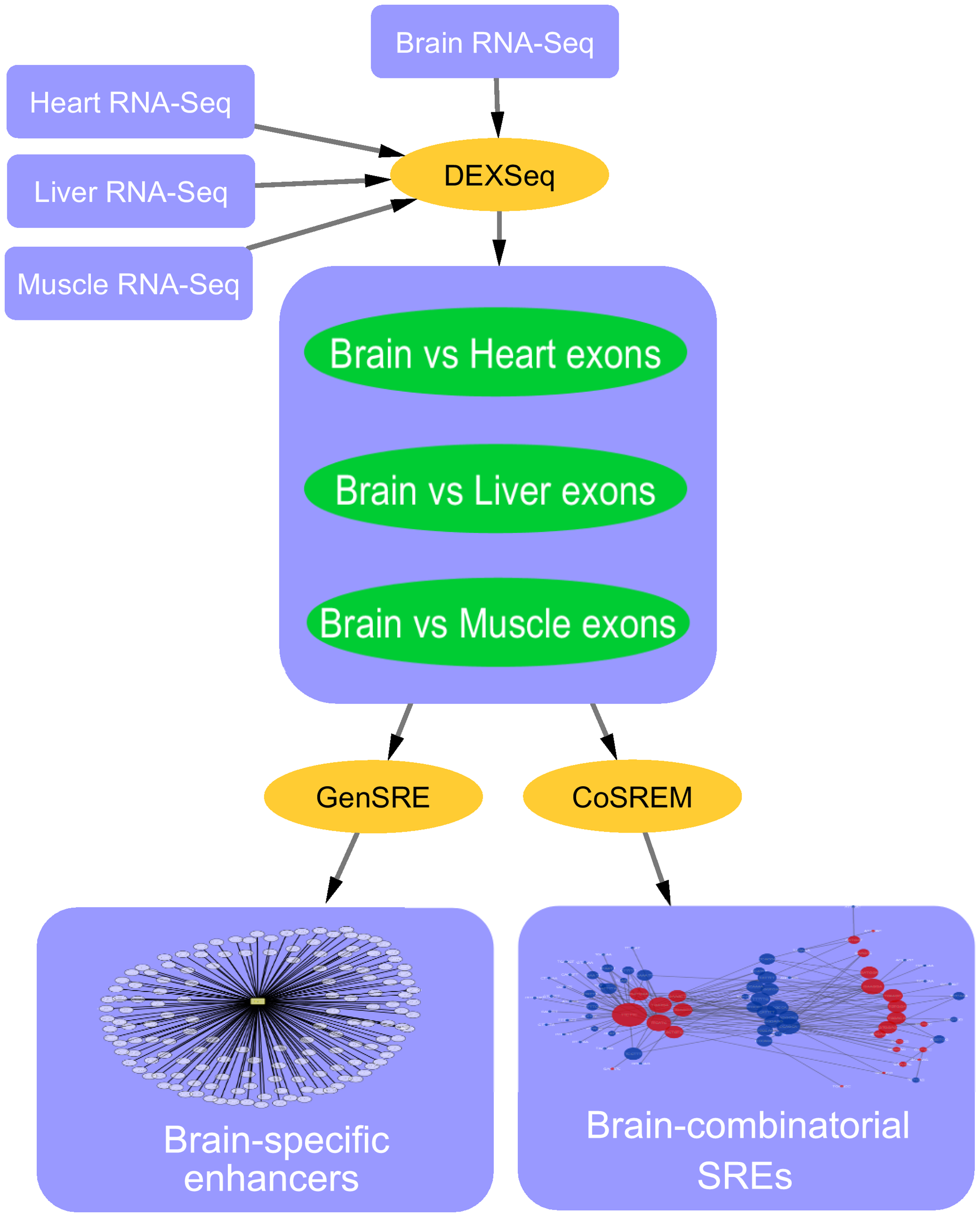

Computational identification of tissue-specific splicing regulatory elements in human genes from RNA-Seq Data
Alternative splicing is a vital process for regulating gene expression and promoting proteomic diversity. It plays a key role in tissue-specific expressed genes. This specificity is mainly regulated by splicing factors that bind to specific sequences called splicing regulatory elements (SREs). Here, we report a genome-wide analysis to study alternative splicing on multiple tissues, including brain, heart, liver, and muscle. We propose a pipeline to identify differential exons across tissues and hence tissue-specific SREs. In our pipeline, we utilize the DEXSeq package along with our previously reported algorithms. Utilizing the publicly available RNA-Seq data set from the Human BodyMap project, we identified 28,100 differentially used exons across the four tissues. We identified tissue-specific exonic splicing enhancers that overlap with various previously published experimental and computational databases. A complicated exonic enhancer regulatory network was revealed, where multiple exonic enhancers were found across multiple tissues while some were found only in specific tissues. Putative combinatorial exonic enhancers and silencers were discovered as well, which may be responsible for exon inclusion or exclusion across tissues. Some of the exonic enhancers are found to be co-occurring with multiple exonic silencers and vice versa, which demonstrates a complicated relationship between tissue-specific exonic enhancers and silencers. © 2016 Badr et al. This is an open access article distributed under the terms of the Creative Commons Attribution License, which permits unrestricted use, distribution, and reproduction in any medium, provided the original author and source are credited.



